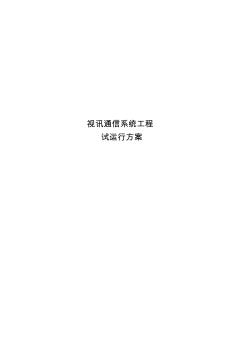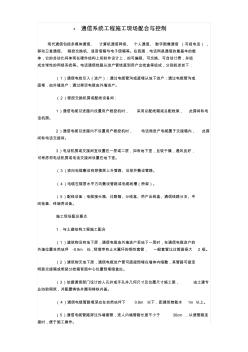PREFACE
1 INTRODUCTION
1. 1 Historical Review 1
1.2 Elements of an Electrical Communication System
1.2.1 Digital Communication System 9
1.2.2 Early Work in Digital Communications 13
1.3 Communication Channels and Their Characteristics
1.4 Mathematical Models for Communication Channels
1.5 Organization of the Book 28
1.6 Further Reading 30
2 ANALOG SIGNAL TRANSMISSION AND RECEPTION
2.1 Introduction to Modulation 32
2.2 Amplitude Modulation (AM) 33
2.2.1 Double-Sideband Suppressed Carrier AM 33
2. 2. 2 Conventional Amplitude Modulation 40
2.2.3 Single-Sideband AM 44
* 2.2.4 Vestigial-Sideband AM 48
2.2.5 Implementation of AM Modulators and Demodulators 52
2.2.6 Signal Multiplexing 58
2.3 Angle Modulation 61
2.3. 1 Representation of FM and PM Signals 62
2.3.2 Spectral Characteristics of Angle-Modulated Signals 66
2.3. 3 Implementation of Angle Modulators and Demodulators 73
2.4 Radio and Television Broadcasting 81
2.4.1 AM Radio Broadcasting 82
2.4. 2 FM Radio Broadcasting 84
2.4.3 Television Broadcasting 87
2.5 Mobile Radio Systems 97
2.6 Further Reading 100
Problems 100
3 EFFECT OF NOISE ON ANALOG COMMUNICATION SYSTEMS 115
3.1 Effect of Noise on Linear-Modulation Systems 115
3.1.1 Effect of Noise on a Baseband System 116
3. 1.2 Effect of Noise on DSB-SC AM 116
3. 1.3 Effect of Noise on SSB AM 118
3.1.4 Effect of Noise on Conventional AM 119
*3.2 Carrier-Phase Estimation with a Phase-Locked Loop (PLL) 124
3.2. 1 The Phase-Locked Loop ( PLL ) 125
3.2.2 Effect of Additive Noise on Phase Estimation 128
3.3 Effect of Noise on Angle Modulation 135
3.3. 1 Threshold Effect in Angle Modulation 145
3.3.2 Pre-emphasis and De-emphasis Filtering 149
3.4 Comparison of Analog-Modulation Systems 153
3.5 Further Reading 154
Problems 155
4 INFORMATION SOURCES AND SOURCE CODING 161
4.1 Modeling of Information Sources 162
4. 1.1 Measure of Information 164
4.1.2 Joint and Conditional Entropy 167
4.2 Source-Coding Theorem 169
4.3 Source-Coding Algorithms 172
4.4 Rate-Distortion Theory 177
4. 4. 1 Mutual Information 178
4. 4. 2 Differential Entropy 179
4.4.3 Rate-Distortion Function 181
4.5 Quantization 187
4.5. 1 Scalar Quantization 188
* 4.5.2 Vector Quantization 198
4.6 Waveform Coding 201
4.6. 1 Pulse-Code Modulation ( PCM) 201
4. 6. 2 Differential Pulse-Code Modulation ( DPCM) 207
4.6. 3 Delta Modulation (AM) 210
4.7 Digital Audio Transmission and Digital Audio Recording 213
4. 7. 1 Digital Audio in Telephone Transmission Systems 214
* 4. 7. 2 Digital Audio Recording 216
4.8 Further Reading 221
Problems 222
5 DIGITAL TRANSMISSION THROUGH THE ADDITIVE WHITE GAUSSIAN NOISE CHANNEL
6 DIGITAL TRANSMISSION THROUGH BANDLIMITED AWGN CHANNELS
7 CHANNEL CAPACITY AND CODING
8 WIRELESS COMMUNICATIONS
REFERENCES
INDES2100433B

 视讯通信系统工程试运行方案
视讯通信系统工程试运行方案

 通信系统工程施工现场配合与控制
通信系统工程施工现场配合与控制